- Home
- Mark Zubro
A Conspiracy of Fear
A Conspiracy of Fear Read online
Table of Contents
A CONSPIRACY OF FEAR
Blurb
Copyright Acknowledgement
One
Two
Three
Four
Five
Six
Seven
Eight
Nine
Ten
Eleven
Twelve
Thirteen
Fourteen
Fifteen
Sixteen
Seventeen
Eighteen
Nineteen
Twenty
Twenty-one
Twenty-two
Twenty-three
Twenty-four
Twenty-five
Twenty-six
Twenty-seven
Twenty-eight
Twenty-nine
Thirty
Thirty-one
Thirty-two
Thirty-three
Thirty-four
Thirty-five
Thirty-six
Thirty-seven
Thirty-eight
Thirty-nine
Forty
Forty-one
Forty-two
Forty-three
Forty-four
Forty-five
About the Author
Other Books by Mark Zubro
Trademarks Acknowledgment
MLR PRESS AUTHORS
GLBT RESOURCES
A CONSPIRACY OF FEAR
A Tom and Scott Mystery
MARK ZUBRO
mlrpress
www.mlrpress.com
When an elderly man with a lifetime of fear and pain behind him approaches Tom Mason with an intriguing story, Tom has no idea that he and husband, Scott Carpenter, will be plunged into an anti-gay conspiracy and a maelstrom of death. They race against time and a deadly killer who may have both of them in his crosshairs.
Copyright Acknowledgement
This book is a work of fiction. Names, characters, places, and incidents either are products of the author’s imagination or are used fictitiously. Any resemblance to actual events or locales or persons, living or dead, is entirely coincidental.
Copyright 2014 by Mark Zubro
All rights reserved, including the right of reproduction in whole or in part in any form.
Published by
MLR Press, LLC
3052 Gaines Waterport Rd.
Albion, NY 14411
Visit ManLoveRomance Press, LLC on the Internet:
www.mlrpress.com
Cover Art by Deana Jamroz
Editing by Neil Plakcy
Print format: ISBN# 978-1-60820-962-0
ebook format
Issued 2014
This book is licensed to the original purchaser only. Duplication or distribution via any means is illegal and a violation of International Copyright Law, subject to criminal prosecution and upon conviction, fines and/or imprisonment. This eBook cannot be legally loaned or given to others. No part of this eBook can be shared or reproduced without the express permission of the publisher.
ONE
Thursday - 4:05 P.M.
Across the street, the motley assemblage stood in the pouring rain. The sprinkling of bedraggled and sodden people were far less than the promised thousands of rabid fanatics. Their drooping banners looked homemade and were mostly hard to read. A few bare patches of white on their signs gleamed in the streetlights. The legible parts of what was written were in stark black or angry red letters and revealed inaccurate, unpleasant, and unkind slurs about gay people.
More television cameras and reporters lined the sidewalks than demonstrators.
Mobs of protesters had sworn they’d shut the city down: right wing religious zealots from a variety of denominations had threatened to march, rabid gun nuts galore had vowed to appear, the Kansas crazies had promised to show up. Many had warned of divine retribution. Rumors of violence swirled through the city.
Extra police patrolled the nearby streets. Security guards stood inside and outside the gallery. At the moment, the members of all these groups looked bored, and depending on their level of preparation and current location, drenched as well.
The heavy rain and thick clouds had turned the late-spring June afternoon to dark November gray.
I nudged Scott’s arm and pointed through windows of the atrium vestibule at the scruffy collection of dispirited picketers. “Mobs of angry protesters aren’t what they used to be.”
“As long as it doesn’t discourage people from attending.”
“With all this publicity, they’ll make tons of money.”
Scott had been briefed on the results of meetings of the frightened and frantic representatives of the gay community, owners of the Leonardo da Vinci gallery where the event was being held, plus representatives from the Mayor’s office, the police department, and private security agencies. With all the controversy and promised protests, many had been afraid donors would back out. Several of them had been hesitating as a result of the negative publicity, but Scott had remained steadfast in his commitment, never wavering, refusing to listen to the voices trumpeting fear. With Scott’s cash, he pretty much guaranteed the success of the exhibition. Money talks, and his spoke in favor of continuing with the exhibit. The other donors had followed Scott’s lead and stood firm as well. Scott had reported that all had been reassured that calm and reason would prevail. I hoped the reassurers were right.
Scott pointed at the sculpture which was the focal point of the half-block long, five-story-tall glass atrium. “It’s beautiful.”
I nodded in agreement. The details were exquisite. The lines and proportions extraordinary. The westward facing atrium had numerous clusters of statues, carvings, and figurines. This one was special.
“Suffer the Children” was the sculpture that had made headlines and was the proximate cause of the damp and muted upset in the streets outside.
The sculpture was over twelve feet long, but at the most sixteen inches high. It consisted of a series of tableaus representing incidents where children had murdered other children with guns from their own homes. Each scene represented an incident taken directly from news stories, mostly horrific accidents. Whether deliberate or the collision of random mishaps, the ghastliness of the results remained the same. The pouring rain seemed an apt backdrop for the sculpture. The heavens should weep at such madness.
Fine and delicate details showed the surprise and horror on the faces of victims and perpetrators. The children, their rifles, and handguns stood on top of a mound of weapons. The gun nuts were furious.
Bracketing the children were two set pieces. Each end had a representation of Jesus. The one on the right pictured Jesus weeping, his hands covering his eyes, very much in the tradition of Bill Mauldin’s statue of a weeping Lincoln that appeared after President Kennedy was assassinated. The Jesus on the left was crushing a handgun in one hand and a rifle in the other. Shards lay at his feet.
They were as well-muscled as the hottest porn star. Both Jesuses were naked with semi-hard dicks.
The central tableau of the “Suffer the Children” sculpture was a modified Pieta, a Virgin Mary, but this time holding in her arms a child with a gunshot wound to the head. The child was nailed to a cross made of two miniature AK-47s. Tears streamed down the Virgin Mary’s cheeks. She too was naked.
With all this prominent display of naked Christian figures, the religious wack-jobs had gone nuts.
The whole assemblage rested on a five-foot-high, solid rectangular block covered in multi-hued tiles.
Scott asked, “How do they know it’s Jesus Christ?”
I pointed. “Both have the stigmata in hands, feet, and side, and a crown of thorns on lank, flowing hair.”
Spent shells and random bullets were scattered amid the debris depicted along the base. These were all made from crystals some pure white, others red, blue, and yellow. They seemed to capture and radiate the beams of judiciously placed spotlights on the ceiling and on the stainless steel beams framing the windows. Rainbows reflected from the crystal and danced about the room. The light reflecting off fissures emphasized the shadows which helped accentuate the horror they depicted. The polished bronze guns enhanced the feeling of horror. Each aspect contributed to the creation of revulsion, disgust, and pity echoing in the viewer’s mind.
It was a frightening, fearful thing that captured the infinite terror of those life-shattering moments. I was reminded of the night Scott and I were driving north from Los Angeles on Interstate 5, and a forest fire was burning in the mountains in the distance to the west of us. From the freeway we could see the line of the vast fire. It was awe-inspiring and horrific, the incredible beauty contrasting with the massive catastrophe. Back then, we’d pulled off the road and watched. It was as if a bolt of throbbing lightning was captured on the ground but did not fade. This sculpture encompassed all that feeling of awe and fear and horror and more.
Scott and I were at the preview night of the Starving Artists Festival and Fundraiser. The Leonardo da Vinci gallery was in the River North section of Chicago. If there was a trend, the denizens of this part of town were at the head of it, or definitely assumed you weren’t, and they were. We’d eaten at a few of the restaurants in the area and paid outlandish prices for minuscule portions. Since the Mashed Potato Club closed years ago, it’s hard to get a filling meal from the Kennedy Expressway on the west to LaSalle Street on the east and from the Merchandise Mart on the south to about Division Street on the north, or at least find a filling meal that didn’t cost more than the gross national product of a developing nation. Well, okay, Carson’s Ribs was the big exception to this—try the garbage salad with the house dressing. Scott tells me not to be so critical. Then again, we do both share the attitude, if we don’t have to cook it, and we don’t have to clean it, it’s gourmet. There just doesn’t seem to be enough provender in these places.
The fundraiser was held every June to coincide with Gay Pride month. All the money raised went to numerous LGBT causes in the city. Scott had been a supporter for years. He’d agreed to be a major donor when not just famous LGBT artists were shown, but multiple works by unknown painters and sculptors as well, especially those from Chicago’s gay community. Scott was the anonymous benefactor who agreed to match all the donations from the auction one-for-one. He insisted he would continue to do this if, when he came to the preview, he would not be fussed over, introduced, or taken notice of. Nor was his name to appear in any brochure or advertisement for the fundraiser. While he had spoken with and been briefed by the owner, he refused to attend any meetings connected with the exhibition. We’d both been involved in far too many gay organizations to bother risking getting involved in the inanity attendant to so many such groups.
When we’d walked in, we’d nodded to Benedict Ayrfield, the principal owner of the gallery, but, as agreed, he left us in peace.
“Suffer the Children” had been the newsmaker of the show. I guess in terms of raising money, maybe there is no such thing as bad publicity.
We moved on to the next piece. I frowned at the sculpture. In a slide show on the Internet, we’d seen pictures of all the art works prior to attending. I hadn’t been sure what this particular one was when I saw it on line. In person, it was kind of a mess. Mostly it looked like someone had taken packing crate peanuts and thrown them up in the air while at the same time aiming a spray gun filled with glue at them. I didn’t know if you could fill a spray gun with glue and get a discharge from it when you hit the nozzle, but if you could, this sure looked like the result.
I said, “I kinda still don’t get this one.”
Scott shrugged. “Maybe it’s upside down.”
“It’s a sculpture.”
“Sculptures can’t be upside down?”
I tilted my head to get a different perspective. “Kinda not much,” I muttered.
The next sculpture consisted of a circle of muddy-brown, Styrofoam ducks all standing on their heads. They had quizzical expressions on their faces. Sort of cartoon comic strip characters, only stupider and meaner. All of them held papier-mâché rifles duct taped to their wings. They were pointing the firearms at the duck ahead of them in the circle, perhaps an ultimate circular firing squad, but it was entitled “Not All It’s Quacked Up to Be” and was supposed to be a satire on some obscure cable television show.
Other large figures and carvings graced the vestibule. Including one of two women with their arms around each other’s waists while gazing into each other’s eyes.
The da Vinci gallery was twenty thousand square feet. The five-story glass, atrium vestibule was terraced, like a wedding cake, with an observation deck at the very top. Pots of plants and a few pieces of furniture were interspersed with the sculptures. A live string quartet played Haydn in a corner of the atrium. Their music soared to the glass ceiling and echoed back. Running along the front of the vestibule was a set of tables upon which rested a twenty-foot long catered buffet flanked at either end by a brace of silver coffee urns.
Fifteen feet to the right of the entrance, television cameras, bright lights blazing, encircled a man wearing tight jeans and a tatty madras shirt all molded to his skinny body. I knew this to be Arnie Schandle, the creator of “Suffer the Children.” We’d been introduced to him, but were little more than acquaintances. We ignored him and the to-do.
A man wearing a dark gray suit, dark gray tie, and a white shirt strode up to us. He placed himself so his back was half turned to me and placed his hands on his hips so his left arm and elbow presented a further barrier between Scott and me. He said, “Mr. Carpenter, I’m Jim Traverno, would you like a personal tour?”
As the husband of someone famous, I’m used to being ignored. Still irritated by it but used to it.
Scott reached around him, took my hand, smiled, and said, “Thank you, Tom and I will just look for ourselves.”
Traverno didn’t deign to glance at me. “If you need anything, let me know.”
Scott nodded, and we moved off.
Traverno must not have gotten the leave-the-famous-guy-alone memo, or he got the memo and was deliberately ignoring it because he was a desperate fan or an asshole, but Scott is a gentle and forgiving man. Unencumbered by over-solicitous staff, we stepped toward the entrance to the museum-like corridors of art work beyond the five-story entryway.
We were admiring the first piece, a portrait of two men holding hands on a beach at sunset, when a crowd of men dressed for the rainy June afternoon swung into the vestibule behind us. We could still see most of the entrance. The group fluttered around an elderly man who was using a walker to propel himself in minute increments through the doorway.
TWO
Thursday - 4:23 P.M.
Once inside, a dark-haired, much younger man shook rain from an umbrella, folded it neatly, and hung it by the crook from the medical contrivance. Then he took the older gentleman’s jacket and folded and placed it into a pouch hanging next to the umbrella.
The rubber wheels creaked on the floor as the aged gentleman maneuvered the walker into the room. The idle thought crossed my mind that someone who had an entourage and a keeper couldn’t afford a can of WD-40, or among those vying for his attention none really cared enough to attend to something so simple? The cluster of men elbowed the young man away from the old guy’s immediate vicinity.
The older man wore Wrangler jeans on his emaciated frame. My eyes were drawn to his distinctive gold belt buckle that gleamed when light from one of the overhead spots hit it.
I said, “That can’t be.” I nodded in his direction.
Scott looked. “What?”
“The old guy.”
“Nobody I know.”
“It can’t be.�
�
“Who do you think it is?”
I thought back to memories of long ago childhood and loving everything connected to baseball. “Could that be Peter Fulham? He used to play baseball. He was sort of famous just after World War II and into the fifties.” When he turned to the left, I could see a twisted and scarred ear. “And his ear. Peter Fulham had an oddly misshapen ear, like this guy. The televised loop of him doing some kind of tribute tour played for years. I didn’t see it happen live. He struck out the last nine batters he faced and ended up with a one-hitter in that game. The crowd went nuts. It was a big deal. I also watched it because I thought he was hot.”
“You knew he was hot as a kid?”
“I was a clueless little gay kid who couldn’t stop watching his crotch as he pitched, and I admit I was fascinated by his odd ear.”
Scott scratched his head. “I maybe heard of him. It was before my time.”
“Before mine, but I remember the footage, and I will never forget that belt buckle.”
“What about it?”
“If they gave little gay kids a manual for “How to Recognize You’re Gay” for those of us who aren’t wearing fedoras and dancing in Broadway musicals by the time we’re ten, in that manual, would be a section about staring at sports heroes. And staring at their crotches trying to figure out exactly where their dick and balls were under their uniforms. He always wore that gold-looking belt buckle.”
“News to me.”
“You didn’t watch him?”
“I was out playing sports, not watching television.”
“I think maybe he was in a group picture for the gallery before the opening. You know, the one you weren’t in because you want to be anonymous. Although in that picture, I didn’t notice the belt. I don’t think it was shown.”
Scott shrugged. “Not a clue.”
I said, “I certainly didn’t recognize him then, and since you weren’t in the picture, I didn’t really look closely. Plus he didn’t have the side of his face with the ear facing the camera. Now, I’m thinking it might have been him. If he was in the picture, maybe he’s a donor or a patron, or something.”

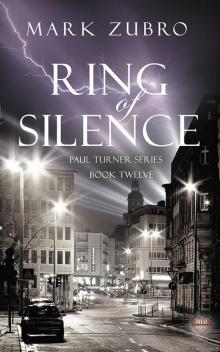 Ring of Silence
Ring of Silence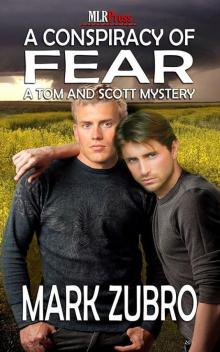 A Conspiracy of Fear
A Conspiracy of Fear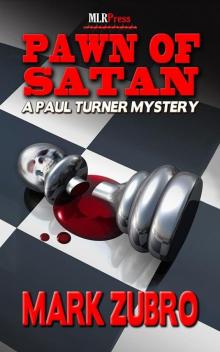 Pawn of Satan
Pawn of Satan Safe
Safe Another Dead Republican
Another Dead Republican Black and Blue and Pretty Dead, Too
Black and Blue and Pretty Dead, Too Alien Home
Alien Home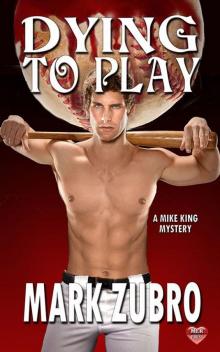 Dying to Play
Dying to Play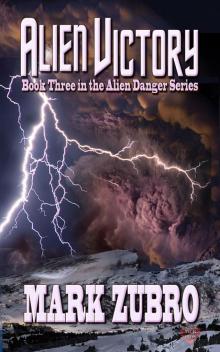 Alien Victory
Alien Victory